Erik Qualman's Blog, page 595
July 11, 2014
The Complete History of PPC Advertising [Infographic]

The folks at Internet Marketing Inc. created this fun, interactive infographic displaying the evolution and history behind pay-per-click advertising- from it’s creation in 1996, all the way to the present state of affairs in 2014.
Post this on your site (Embed Code):
[image error]
Taming the Social Media Monster: How Social Media Benefits Businesses

There’s no doubt about it, social media has turned the business world on its head and revolutionized the ways in which companies interact with consumers. Social networks give brands access to an unprecedented volume and variety of consumers, and those consumers aren’t just young people. 27.5 million users over the age of 55 engage in social media, according to a study by qSample. It’s become an integral part of people’s lives. Even on the go, people need to check their profiles, with 60% of millenials having said they use their smartphones for social networking. The power of word-of-mouth and the consumer voice has been magnified to compete on the same level as traditional advertising, and people freely give more information than any marketer could have dreamed of collecting 20 years ago. With so many new options available, many companies are left without a clue where to start, and some even reject social media marketing entirely instead of working to perfect their campaign. Taming the social media monster can be challenging, but it’s well worth the effort. Whether B2C or B2B, there’s more to social media than simply having a profile.
The most important aspect of social media is communication. Sites like Facebook, Twitter, and LinkedIn provide companies with direct access to consumers and clients, but people aren’t satisfied with one-sided conversations anymore. They have thoughts and ideas that they want to be heard, and social media provides a platform for that happen. Businesses can take advantage of this by collecting feedback and ideas to cater their products to what consumers actually want. Social media allows brands to test and perfect ideas through consumer feedback at extremely low cost, but research and development isn’t the only department that has benefited greatly from the advent of social media, PR has as well. In the event of a crisis, social media provides companies with a place to keep consumers informed and allow them to answer questions. In addition to this, it allows companies to control the messages sent to consumers, which avoids the negative perspectives given by news outlets.
Communication is one aspect of engagement marketing, but there are many others that can also be used. Consumers want to be involved, and social media is the perfect place to do that. One of the best ways to allow people to participate is through crowdsourcing. Contests that ask consumers to design a new logo, or even film their own commercial for a product are an example that can cut costs for a business while empowering consumers and building loyalty. Encouraging shares, likes, and other digital word-of-mouth advertising is cheap and creates a sense of community around the brand as well. By aligning the company’s goals with what the consumer wants, everyone involved can benefit.
Social media sites collect an incredible amount of data on consumers. Most people don’t realize just how much information they give out online. Name, age, and birthdates are obvious, but even simply liking a page or post can give marketers an extraordinary insight into people’s lives. It’s not uncommon for addresses, marital statuses, and even current locations to be given by users. For businesses, social media can provide insights on known target demographics, or even help a company identify potential new targets.
The digital age is here, traditional marketing has become antiquated, and businesses must adapt by joining social media sites. Consumers demand more than a one-sided conversation. They want to be involved, and social media is the perfect place for engagement marketing. The variety of users and their willingness to give useful information can provide marketers with insights and data collection tools that would have seemed unbelievable only a few years ago. Whether it’s B2B or B2C, social media is the place to be.
[image error]
July 10, 2014
Let Social Media Reunite You with Your Child

 Putting a child up for adoption is one of the hardest decisions you’ll ever make in your life, but social media is helping to make the decision process a little easier.
Putting a child up for adoption is one of the hardest decisions you’ll ever make in your life, but social media is helping to make the decision process a little easier.
Thanks to social sites like Facebook, mothers and fathers are finding it easier to reunite with their children who were adopted at birth.
Here are just a few ways social media is helping parents reconnect with their adopted children and vice-versa:
Finding the Adoptive Parents
If you frequent sites like Twitter and Facebook, then you already know just how effective social sites are at connecting friends and family. This is why social media is such an essential tool when it comes to reuniting with your child.
The first step in the reuniting process is using social media to track down the adoptive parents. If you have a first and last name as well as the city where the adoptive parents live, then you can use Facebook’s search feature to find their profiles.
From there, you can reach out with a friend request and an initial message.
But, if you don’t have the adoptive parents’ contact information on hand, then you might need to take a different route.
Social media will still help open doors, but you need to check with the adoption agency first to make sure the adoptive parents allow contact. If so, the adoption agency can usually provide contact information.
Opening a Line of Dialogue
Once you have the appropriate contact information, using social media to open a line of communication is a great way to get the ball rolling. If you’re using Facebook for example, you can send the adoptive parents a message that states who you are and where you are in your life.
After you start a dialogue, then you can begin asking specific questions.
If the adoptive parents are receptive, then you can discuss the possibility of reuniting with the baby you put up for adoption in the future.
In other words, slow and steady is the best approach when contacting your child’s new family.
Catching up via Social Sites
Social media sites like Facebook are also a great way to catch up on lost time with your child.
If you do succeed in contacting and starting a relationship with the adoptive parents on Facebook, you can get a feel for the type of person your baby has become through timeline pictures and photo albums. This is an important step and will give you a frame of reference for when the time comes to reunite.
Social Guidelines to Consider
There are some particular guidelines to consider when using social media to reunite with your child.
For starters, if your child is 18 years or younger, you need to ask permission to make contact through the adoption agency first. Directly contacting your child through social media without the adoptive parents’ knowledge is the wrong approach and could result in legal complications.
If your child is 18 years or older or the adoptive parents agree to let you contact them through Facebook, it’s important not to force the relationship.
The best way to successfully reunite with your child is to create an ongoing dialogue with him or her via social media and let them bring up the possibility of reuniting once they get to know you.
When you’re ready to reunite with the baby you gave up for adoption, let social media help guide the way.
Photo credit: Image courtesy of arztsamui / FreeDigitalPhotos.net
[image error]
July 8, 2014
6 Content Marketing Tools Your Brand Should Be Using

As more brands recognize the power of content marketing, we’re seeing some awesome new ways to create, curate, discover and share content across the Web. Let’s take a look at six ways your brand can implement some of the hottest content marketing tools now.
Curate Content from the Web – LookBookHQ
LookBookHQ is a way for brands to assemble all types of content from around the Web into “LookBooks” that are embeddable, shareable and viewable practically anywhere. Smart marketers will combine both original and curated content to engage their audiences. As the Internet evolves toward less text and more visuals, LookBookHQ is aligned nicely with the future of the Web.
LookBookHQ offers some pretty exciting features:
Annotations
Marketing Automation Platforms (MAPs)
Analytics
Lead capturing
Collaboration tools
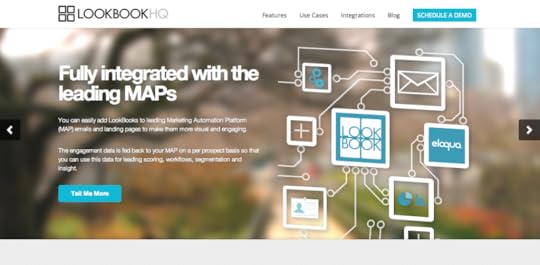
LookBook
Who’s Using it Successfully: Idea Workshop is using LookBookHQ to create digital press releases for their clients.
Tell Your Brand’s Story – Storify
Storify is another content curation tool that allows users to pull together content from all over the Web using hashtags, keywords, URLs and anything else you can search for. The app really shines when there’s a hashtag associated with your brand or a campaign you’re running. Add your audience’s social media posts and content featuring your hashtag to really drive engagement.
To help users make sense of their stories, Storify allows headlines and other text to be inserted anywhere in the story. Storify stories can be embedded almost anywhere online.
Who’s Using it Successfully: Self Magazine ran their #UpNOut campaign in January 2013. The magazine used Storify to include tweets from their followers who were participating in their getting fit campaign for the New Year.
Make Your Images Interactive – ThingLink
ThingLink is a content creation tool that follows the trend of visual content in a unique way. This app overlays a given image to make it interactive, which you can then share and embed anywhere. The image overlay allows you to make any part of the image clickable, signaled by icons.
Some features of ThingLink include:
Real-time Analytics
Customization
Social Network Interactivity

Who’s Using it Successfully: Bishop TD Jakes’ ministry used ThingLink to create interactive images for his Date Night campaign series. The image’s interactive spots link to TD Jakes’ books, related articles, notes, etc.
Create a Content Hub – ÜberFlip
For brands that really want to engage their audiences by going beyond selling, ÜberFlip is a great choice. You can create a content stream that compiles related content from across the Web. For instance, a fashion brand might create an ÜberFlip hub that features blog posts, videos, photos and other content about a particular collection. That hub can now be embedded directly on the brand’s website, or it can be shared on social networks to be viewed on multiple devices.
Like other content curation tools, ÜberFlip includes lead generation and analytics features as well.
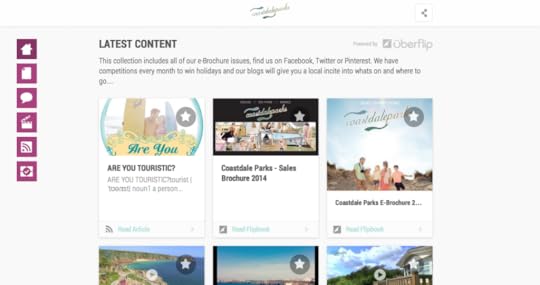 Who’s Using it Successfully: Coastdale Parks is using the app to create an entire multimedia experience for their audience, including digital brochures, videos, etc.
Who’s Using it Successfully: Coastdale Parks is using the app to create an entire multimedia experience for their audience, including digital brochures, videos, etc.
Find Content from Real Influencers – Little Bird
The Internet is flooded with everyone striving to be an expert and an influencer. Everyone wants to be heard, and as a blogger, marketing professional or anyone searching for solid information, it’s quite a bit of work sorting through all the information available online. That’s where Little Bird comes in. Using social graph analysis, Little Bird finds the most relevant content by the most connected and influential people in your field.
Little Bird makes it easier to find top rated content from peer-approved influencers. Use Little Bird to build influencer lists or to discover sub-communities and new topics to explore.
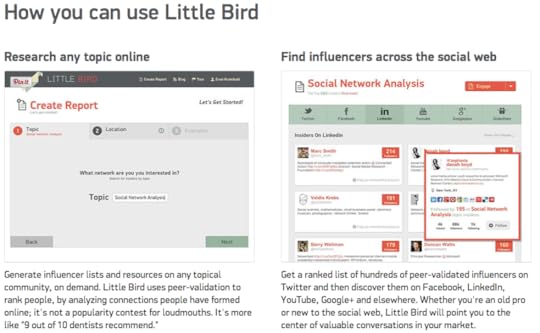 Who’s Using it Successfully: Little Bird boasts Comcast, Iron Mountain, the Bill and Melinda Gates Foundation and Heinz Marketing as users of their web app.
Who’s Using it Successfully: Little Bird boasts Comcast, Iron Mountain, the Bill and Melinda Gates Foundation and Heinz Marketing as users of their web app.
Make Your Own Infographic – Piktochart
Infographics, though not a new concept at all, have all but taken over the Internet in recent years. Bad infographics are annoying and pointless, but good ones are a creative way to produce content and share information online and in print. You may have thought constructing a good infographic would be out of reach if you don’t have access to a graphic designer, but Piktochart solves that problem.
Piktochart offers users free and premium templates to easily create quality infographics with custom fonts, text and colors.
Who’s Using it Successfully: Clarity Way Rehab produces infographics often. How do they do it? By using Piktochart and similar tools to make putting together infogrpahics easy.
Use these suggestions and tools to start creating, curating and engaging your way into the visual content world. If you know about any content marketing tools we didn’t mention here, please share them below in the comments.
[image error]
10 Perfect Tips to Start a Business Online

The Internet offers so many opportunities, that more and more people are becoming interested in starting an online business by the day. No matter how lucrative, brilliant and unique your idea is, there are some general rules that apply in starting an online business and making it successful. The following guide will teach you how you can establish an online presence and manage a successful business.
1. Start exploring your options
There are general requirements that apply to starting any business, regardless whether you choose to operate it in an online environment or not. First of all, you should learn everything about how online businesses are being managed, because your idea will collapse if you fail to provide the proper foundation for its growth.
2. You need a domain name
The process of registering a domain name is affordable and simple, but be aware of the possible scams the Federal Trade Commission warns us about. These online sources will help you learn everything you need to know about domain name registration:
-
- Internet Domain Name Registration Services
- Accredited Registrar Directory
3. Choose your web host
There are many web hosts you can choose from, so make sure to evaluate their strengths and weaknesses when making a choice. It is very important for your host to be secure and reliable, but you should also pay attention to other factors, such as the cost and offered features.
4. The content has to be of high quality
First of all, you can’t allow any sign of plagiarism on the website. By using Help.Plagtracker.com, you will make sure all content you publish is completely unique.
Your website should be a source of high-quality information, so you will need to advance your writing and grammar skills. At EssayMinions.com, you can have a consultation of a knowledgeable writer who will transform your content into a better one or will write the whole text instead of you. If you have hired copywriters to work on the content, the specialist on this site will help you make sure it’s polished out before publishing.
5. It’s time to think about design
You can work on the design by yourself if you have the skills, but you can also use an independent web design company or a freelance designer to do the magic.
Don’t forget that you have to comply with the Intellectual Property Law. You don’t want to be accused of infringing the rights of another company, so make sure you go through the basic facts about trademarks first.
6. Time for marketing and advertising
In order to achieve your goals of becoming successful, you have to generate more traffic, which cannot be done without proper marketing and advertising techniques. These resources will help you tackle the marketing challenge properly:
- Information about online advertising
- Advertising and Marketing on the Internet: Rules of the Road
6. Know the online business regulations and respect them
As an online business owner, you will have to comply with all laws and regulations that apply to this type of businesses. For any information you need from this aspect, you should contact the Federal Trade Commission and get definite answers. You will have to know and respect these regulations if you want to maintain a legal online business:
- Children’s Online Privacy Protection Act
- Selling on the Internet: Prompt Delivery Rules
7. Get informed about state and local requirements
Besides complying with federal laws and regulations, you must also get informed about local and state requirements. You can easily find this information online by narrowing the search to your city, county, and state.
8. Don’t forget the tax requirements
As an owner of an online business, you will be required to comply to the same local, state, and federal tax laws that regular business are subjected to. You should contact your state revenue agency in order to learn everything about their tax requirements.
9. Trade laws on international level
If your business operates internationally, you will have to respect many additional requirements contained in the international online sales regulations.
10. Additional resources to get you started
Now that you have almost all information you need, you should go through the following guides that will prepare you for being successful as an online business owner:
- Strategies for growth – a video series that will teach you how to use the latest technology for your business.
- Information on Home-Based Businesses
- Self-Employment tips
Conclusion
The immense number of successful online businesses inspires many people to get into this competition, but you shouldn’t forget that the number of online projects that start and fail is also big. The competition in the online world is fiercer than ever, and you have to build the proper foundation if you want to swim with the sharks. Everything is possible if you have the right resources at hand and you’re determined to succeed.
[image error]
July 7, 2014
3 Reasons Why Pinterest Thrives From Holidays

Have you wondered why social media, particularly Pinterest is so addicting? As it has been described as “ESPN for women,” just what is in the social media crack that has you clicking “Pin It” over and over again?
Here are three reasons why Pinterest thrives on social media addicts, especially during holiday season.
The Skinny
1. Visual media is the dangling carrot for web surfers
2. It saves time for party planners.
3. Do-It-Yourself ignites the excitement firework in your brain.
Taking it piece-by-piece let’s start with the first item:
Visual media
1. Visual media is the dangling carrot for web surfers
Let’s outline this statistically, shall we?
• 90% of information transmitted to the brain is visual
• The brain process visual information 60,000 times faster than text
• 40% of people respond better to visual information than plain text
Wait… You mean to say….
 The Importance of Visual Content | Infographic Courtesy: Business2Community.com
The Importance of Visual Content | Infographic Courtesy: Business2Community.com
How many of you scrolled straight to the infographic and started reading? My point exactly.
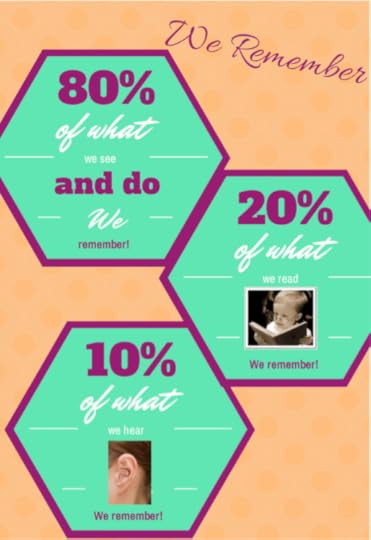 LuckyTamm: We Remember Infographic | Statistics Source: Business2Community.com
LuckyTamm: We Remember Infographic | Statistics Source: Business2Community.com
Crafty individuals like to show off their creativity. Pinterest is a perfect venue to do so. Especially since it allows for succinct and organized manner and as you can see, Pinterest is chalk-full of dangling holiday preparation carrots.
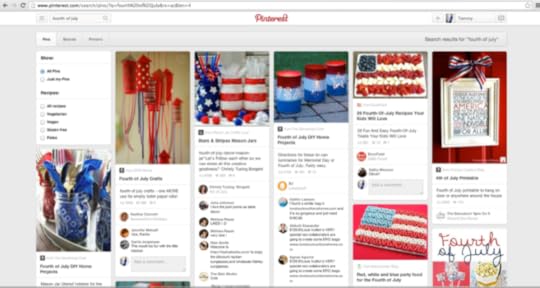 Pinterest is chalk-full of ideas amalgamated to leave your mouse scrolling and your mouth drooling. | Image Courtesy: Tammy Luksich Pinterest Profile
Pinterest is chalk-full of ideas amalgamated to leave your mouse scrolling and your mouth drooling. | Image Courtesy: Tammy Luksich Pinterest Profile
Saves Time
2. It saves time for party planners.
Most working professionals would agree the term “busy” is an understatement. Between dropping off the kids at summer camp, keeping up with a daytime job, maintaining household chores, and managing time to make it to the gym, making T-I-M-E to schedule a Fourth of July barbeque is challenging! The beautiful thing about Pinterest, is it helps expedite a lot of the “idea generating” process and helps you come up with a lot of creative ways to host a fabulous barbeque for everyone to enjoy. It may just have a zillion party planning templates for you to peruse through as well.
In relation to the Fourth of July, here are some of the top pins you may find useful:
Fourth of July Crafts
Fourth of July DIY Home Projects
29 Fourth of July Recipes Your Kids Will Love
100 Patriotic Ideas
Fourth of July Outfit Ideas
Do-It-Yourself
3. Do-It-Yourself (DIY) ignites the excitement firework in your brain.
Question: Did any of you know the “mason jar” had so many uses prior to Pinterest? It seems like for every Do-It-Yourself project, there is some type of mason jar craft. I’m just sayin’.
According to Mashable’s story: Why Is Pinterest So Addictive, the “I can do that” factor plays a major role in Pinterest’s popularity gas tank.
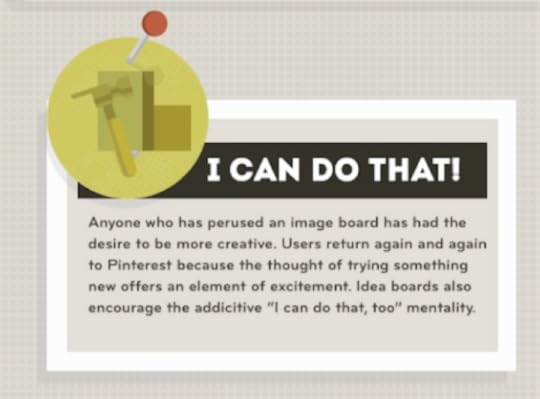 Do-It-Yourself ignites a new kind of online excitement. | Image courtesy Flowtown, via Column Five
Do-It-Yourself ignites a new kind of online excitement. | Image courtesy Flowtown, via Column Five
Most Pinterest users that have gotten married, given birth, or tried inventing their own ways of organizing or “Mason Jar Ideas” are either cussing or praising the explosion of Pinterest. The main advantage to DIY Pinterest project is they are fun ideas that you can make on your own or save for a future time to make. Lastly, you don’t have to be a carpenter or an electrician to create some of these projects. Pinterest is basically your operator’s manual for creating cleverness on your own.
Your Turn
Why do you think Pinterest is so appealing?
Has a particular pin helped you save time?
Why is DIY taking over?
[image error]
Social Media has Changed the Ways We Do Business

Of all the technological developments to be born in the first decade and a half of this century, it can be argued that the one to have the largest impact on business is the social platform. Like them or not, social media platforms like Twitter and Facebook have once again transformed the way that people communicate, and in the process, have changed the way that businesses conduct commerce, handle public and consumer relations, and promote brand identity.
For businesses small and large alike, social media has required a sea shift in the way that they interact with consumers and the public. It also has brought brand reputation – a facet of business that up until recently was likely of minimal concern; simply ignore all of those angry letters and the problem will go away – to the forefront of a company’s considerations. Complaints are suddenly very real and very conspicuous, and businesses ignore them at their own risk.
It is important for businesses to remember that social media enables two-way communication. It is the one marketing platform that allows the consumer to respond. Companies still struggling to come to terms with how best to use social media to their advantage can learn much from campaigns that work – and those that don’t.
What Works and What Doesn’t
Perhaps more importantly than anything, when it comes to social media marketing, businesses must realize that that there is no one-size-fits-all solution; every single social media marketing campaign must be personalized and unique – unique to the company’s needs and to the audience. If a company fails to appreciate this fact, their online approach is destined to fail. Only by tailoring an online marketing campaign to the prospective audience can a business take best advantage of the platforms.
To expound on this further, and with perhaps more specificity, companies are well advised to not carpet bomb their online profiles with promotions, branding, discounts and coupons, and industry news, while being blind to what their customers are asking for. Businesses that succeed on social media stay connected, spreading the responsibility of outreach amongst a team of individuals, so that multiple perspectives, view points, and opinions – all aligned to the corporate identity, of course – can be represented.
In fact, many businesses with a large online presence employ a whole team of social media experts. At these individuals’ disposal are business cell phones, tablets, and laptops – all tools which enable them to stay engaged with their audience in real time (and made increasingly possible due to businesses like T-Mobile allowing free and affordable data plans for businesses). That is the key with social media, ultimately. Companies must engage with the audience, or the audience will flock.
Heading Off Into the Great Unknown
If your business is taking its first initial steps into the social media world, take a deep breath and remain calm. It doesn’t have to be the wild untamed West if you simply stay engaged, keep an eye on (and ear to) your customers, and participate. If you’re unsure of where to start, consider trying to take advantage of trending topics and keywords. If you do so in a manner that is natural and intuitive, it can greatly increase brand exposure and awareness, and in the process, earn you some followers.
As alluded to earlier, however, success on social media platforms ultimately comes down to doing what feels right for your business. Don’t feel beholden to trends or the use of hashtags if it isn’t a good match for your corporate identity or target market. Tailor your approach to your audience, stay true to your voice, and focus not on the quantity of your followers but the quality, and you’re sure to achieve success.
[image error]
July 3, 2014
Sleep Your Way to the Top

Sleep your way to the top. These were the exact words that Arianna Huffington was directing toward me. So funny, yet so true. Or not? Was sleep, the act of getting more of it, a new form of digital leadership tool? If I slept more, could I get more done? It sounded too good to be true.
I looked at my lengthy to do list and thought how large it would grow if I started taking 8 hours of sleep instead of 5. The proposition was boarding insanity; haven’t previous leaders taught us we can sleep when we are dead?! Yet, I looked at myself in the mirror and it wasn’t pretty. My frenetic travel and speaking schedule was taking its toll on my health. A nervous breakdown was eminent and Arianna can be quite persuasive, so … I was going to go for it. The sleep test was on.
Increasing Your Productivity via SleepIQ
Teaming up with SleepNumber they gave me insights on how to get more restful sleep and improve my SleepIQ. While I had the latest digital gadgets for the rest of my life, I soon realized I was currently sleeping on a flip phone. SleepNumber had a new X12 bed which wasanalogous in the mattress industry to when the first iPhone rolled out in the telecom industry. Thanks to SleepNumber I was now equipped with the proper knowledge, funding and equipment to conduct my test.
I was testing several items as they related to my productivity, but topping the list was e-mail productivity. Dreaded e-mail. There is only one question I ask when delivering a keynote performance from stage that elicits a universal response. When asking a crowd “how many would like to receive more e-mail,” in all my years speaking, I have never seen a raised hand. Not one. Dreaded e-mail.
2x Your E-Mail Response Rate
Was it possible to increase my e-mail response productivity by sleeping more? Having interviewed Zappos CEO Tony Hsieh for my book Digital Leader I knew that Tony could process roughly 20 emails in a hour. After much testing I discovered this is roughly what I could do as well.
Later posts will be covering more details and discoveries from my sleep study, but after three months of sleep testing, my results were quite shocking. I owed Arianna an apology. I went from processing an average of 20 e-mails per hour (eph) to 41 eph. By sleeping more I was doubling my productivity! There is more to come on my sleep study in future posts, but if you are still a non-believer, my suggestion is to simply sleep on it.
Discover more from my unique sleep study in this video here:
https://www.youtube.com/watch?v=jHyFPyvY948
Erik Qualman / Best Selling Author & Motivational Speaker
[image error]
Campus Housing Goes Social: #SoMe Innovation in Residence Life

This week I am enjoying the phenomenal experience of attending my first ever Association for College and University Housing Officers – International Conference in Washington D.C. According to the organization website, ACUHO-I “provides members with innovative, value-driven events, publications, research, career services, and online professional development as well as valuable networking opportunities” and “…help our members evolve themselves and their institutions in their efforts to provide their residents dynamic living environments.”
While preparing to be immersed in the world of thousands of campus housing professionals at ACUHO-I, I had the natural instinct to wonder what best practices in social media engagement exist within various university housing departments. Compared to my undergraduate experience of meeting my roommate over the telephone and through mailing letters, times have certainly changed for students who have a myriad of social media resources available through campus housing. I have identified a multitude of dynamic initiatives used by housing and residence life professionals to connect with their students on campus, as well as new and incoming students.
Some of the best examples include:
The Division of University Housing at the University of Wisconsin Madison offers students an option-filled Social Media Portal “to connect with parents, residents and employees in order to fulfill our mission to be the place where everyone wants to live.” Students on their campus can post photos, share videos, and engage their staff and residential community all via social media;
Valdosta State University offered a unique Instagram Contest for their on-campus students. Winners earned gift cards for three categories which included hashtags such as “What Are You Thankful For”, “Pay It Forward” to celebrate good deeds, and “Cram Session” to share posts about studying for finals;
Wright State University Housing uses #SoMe to encourage students to tweet during residence hall opening with a delightful #WSUmovein YouTube video called “Tweet It Like It’s Hot.” WSU Housing also hosts an opening weekend Scavenger Hunt to help new students learn more about the campus. Complete with it’s own Scavenger Hunt website, students can use their instagram accounts and tag pictures from various campus locations with #wsuscavenge as a way to become more integrated on campus. Teams are composed of different residential areas;
University Housing at the University of Georgia offers multiple social media outlets including the Live It UGA Blog which gives residents news, updates on programming and residence hall events. Blog posts cover topics such as Sustainability, Move-In, how to get involved, and information about numerous campus housing resources, all written by students and housing staff; and
Indiana University-Purdue University Indianapolis Housing and Residence Life offers a YouTube Channel with a campus living video, promotional video, and other videos designed to engage students in their new residence hall. IUPUI-HRL also offers their on-campus students options to connect via Facebook and Twitter, and hosted a #Selfie contest with prizes for returning students during contract renewals last spring.
As students have become more digitally astute and their view of a robust campus housing experience has evolved, so have the methods and systems for communication with on campus residents. Offering students choices to connect through social media, as well as using various mediums to send messaging increases the viability of living on campus. Campus housing impacts students far beyond the aesthetic of nice facilities. Housing Professionals who use social media to engage students increase the opportunity to do what is most often important in campus housing, which is to influence and shape learning. One of the strongest ways to share this message is through continuing best practices like those described above. When seeking out new ideas or innovative strategies to make meaningful connections with students, campus housing has unlimited potential when going social.
Thumbnail: Shutterstock
[image error]
July 2, 2014
Being a B2B Leader: How to Connect with Remote Employees

The telecommuting facts are in the statistics. For instance, a survey from Staples recently reported that the benefits of telecommuting are becoming more and more accepted as the norm. Seventy-one percent of employees actually believe the opportunity to telecommute is a huge part of considering a new job. For employers, it’s important to stay in touch with remote employees throughout the day. Many B2B employers choose to use email as their primary source of contact with their workers, but there are other ways to stay connected.
Skype. Often thought of a way to keep in touch with your kids, close friends, or siblings who live far away, Skype is also useful for business. Many businesses use Skype every day. It’s an excellent way to keep in touch with employees. The service offers text chat capabilities, which allows all team members to communicate through brief conversation. For more in-depth discussions, one-on-one meetings, or simple long distance calls, Skype’s video and audio chat functions are an excellent way to keep in touch.
It’s easy, works on most every device, and it’s free!
Google Hangouts. If your team needs to meet with multiple parties at the same time, Google Hangouts is an ideal chat client because of its multi-user video and audio chat function. For higher compatibility, use Gmail to host your team’s email accounts. That way, if you need to quickly call a meeting, Gmail users can hop on the “face to face” chat client.
Google Chat also offers a number of other benefits. For example, users can text chat both one-on-one and in groups. In addition, Gmail users can enjoy the appearance of the chat window within their email screens, so they don’t need to open a separate client to stay in touch.
Google Drive. Google Drive is a free online storage client for files. You can upload files like documents, spreadsheets, and presentations that can be viewed by team members online. Users can also create files with the online client and share them with colleagues. One of the most important features of Google Drive is that the person uploading the documents can allow other teammates to edit the documents. It’s an excellent way to write blogs or communicate with clients.
Basecamp. An excellent tool for communicating and collaborating with employees and clients, Basecamp has become a critical component of many businesses. The service is a project management client that hosts assignments and other information, such as client info, to-do lists, calendars, publications, and more.
Evernote. Like Google Drive, Evernote is an online storage system. While Evernote is a paid system, its storage capabilities are enormous. The client can store webpages, photos, voice memos, copied text, documents, and even handwritten notes.
Evernote also allows team leaders to stay organized with its tagging system. Files and other uploaded items can be sorted into relevant categories and tagged according to content or file type to make them easier to find. Evernote will also do a certain amount of tagging and filing on its own without user input. It’s an excellent way to organize thoughts, share research, collaborate, and more.
Ring Central. A VoIP, or internet-based phone service, is often a must for communicating with remote employees. Ring Central automatically assigns phone numbers to each employee’s computers. That way, when employees make a call, the caller ID is from the same Ring Central-created number, no matter where they are located in the nation. Ring Central also provides a virtual switchboard, allowing recipients to seek out employees in different locations. Ring Central also provides a conference call line.
Dropbox. This is another online storage system. Dropbox allows businesses to keep in touch with clients and employees who aren’t in the company’s network. Team leaders can send files through the service, allowing recipients to access and sync the files to their own computers. As a result, anyone can access files offline as well.
Dropbox has a very limited amount of storage space for free, but the Pro and Business upgrades are actually quite affordable. As a result, Dropbox is a great way to communicate.
Harvest. Keeping track of a remote employee’s time is critical for team leaders who telecommute. Harvest allows employers to manage time, report expenses, and keep track of billing. It’s a simple client with a clear interface, so users can look back on previously tracked times. Harvest also has an app option that integrates seamlessly into users’ desktops, making it easy to access.
Connecting with remote employees has never been easier. There are numerous other options available to keep in touch, including webinars. According to ClickMeeting blogger Agnes Jozwiak, webinars and other online communication with clients help companies increase sales. Organizations and employees alike can take advantage of the benefits offered by working from remote locations. Whether you choose email or the aforementioned methods of staying connected, telecommuting employees are more satisfied and productive which, in turn, remunerates your organization.
Thumbnail: Shutterstock
[image error]






